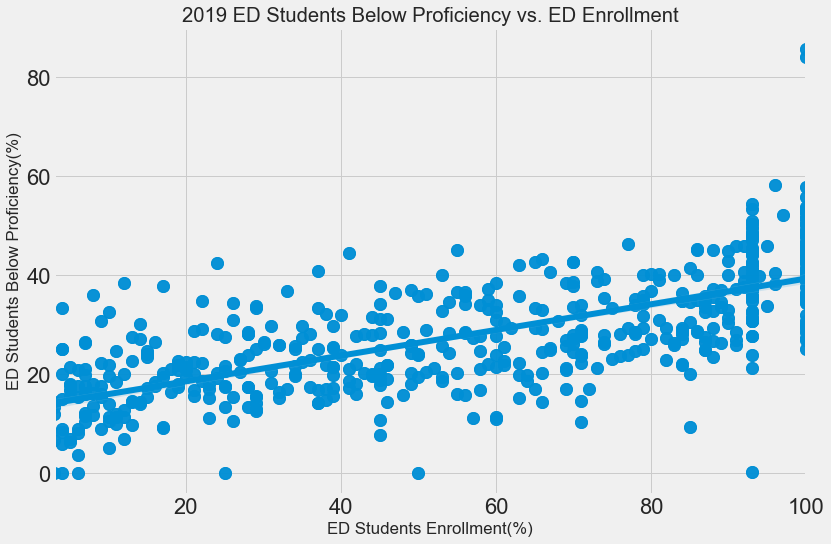ASI – English Proficiency for Economically Disadvantaged Students
The purpose of this project was to explore the literacy proficiency of economically disadvantaged (ED) students in the Atlanta region, how it has changed over time, and its relationship to attributes of schools in the region. Our goal was to provide clarity and direction for future research and initiatives as Atlanta continues to tackle this challenge.
We used English language arts assessments from Georgia Milestones End-of-Grade Assessments data from 2015 to 2019 to examine literary proficiency trends.
Data from 580 out of a total of roughly 840 public schools from the Atlanta region were examined for long term trends. From the chart below, ED students were substantially more likely to have low English proficiency than non-ED students. Over time, percentages of students with low English proficiency are improving, and the gap between ED and non-ED students is decreasing.

At the school level, we were interested in identifying factors related to low English proficiency among ED students. We conducted a regression analysis using ED enrollment rate, percentage of experienced teachers, and dollars spent per student as predictors of the percentage of ED students with low English proficiency. ED enrollment rate was the only statistically significant predictor. That is, as the percentage of ED students in a school increases, so does low English proficiency among those ED students.

This is an important implication, because it says that there are issues beyond teacher experience and expenditures that need to be addressed to support ED students. We recommend that exemplar schools be studied to gain insights on how to make improvements.
